First drive review: Land Rover Discovery 5
What has our off-road drive of the Discovery 5 told us? It’s better than ever when dealing with atrocious conditions, it’s quieter, it's more comfortable and the latest V6 turbodiesel is a great bit of engineering. Now we just need to get it on the road...
The word ‘family’ crops up a lot when talking about the Land Rover Discovery. Whether it’s its role as a family car, being part of the family, or the family of 4x4s this model has generated, the Discovery has worked its way into the affections of many due to its multipurpose role. So, the all-new fifth generation model has a lot to live up to.

To find out if it can, we were given access to a near production-ready prototype Discovery 5 to try out on some of Scotland’s toughest off-road routes. For full on-road impressions, we’ll have to wait for the car’s launch in early 2017, but for now there’s a lot we can glean from this initial drive.
First off, this new SUV hides its size remarkably well. Where the outgoing model is all right angles and tough stance, the new model is much more touchy-feely in its approach. Some may not approve of this in a 4x4 whose raison d’etre is as a ‘go anywhere, do anything’ machine.

Fear not, the Discovery 5 is even more able off-road than its predecessor. It just happens to do this while looking a little less conspicuous down the high street. And, having had a good look around the car in the metal outside of a motor show, we reckon the looks are pretty darned fine.
The driver is presented with a dash that’s strikingly similar to the current Range Rover’s...
Mind you, some of the changes to the Discovery’s style will have the die-hards getting their locking differentials in a knot. For starters, the asymmetrical split tailgate is gone. In its place is a single-piece boot lid that hinges from the top. However, all is not lost as there’s now a natty drop-down load retainer that still lets you and a couple of mates sit on the tail of the car to enjoy lunch, change the kids wellies or cadge a lift when out shooting.
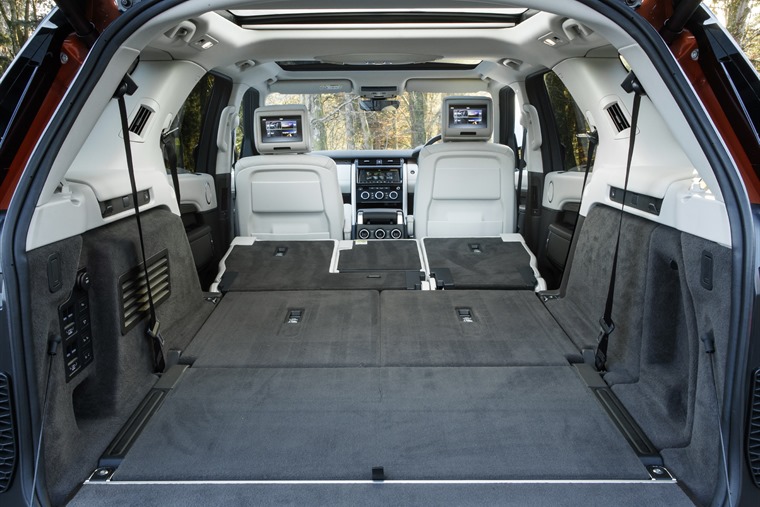
The Land Rover had no problem maintaining forward motion thanks to its 500mm wheel articulation.
You shouldn’t need to sit back there when there are seven perfectly good seats inside the Discovery though. Depending on the spec you choose, you can have electrically operated seats to tilt and fold them. As before, the third row pews stow flat into the boot floor and you can also stow the middle row completely flat to leave an unhindered load bay that offers up to 2500-litres.
Move into the front cabin and the driver is presented with a dash that’s strikingly similar to the current Range Rover’s. That means a simple to navigate infotainment screen, clear dials and twin rotary controls for the gear selection and Land Rover’s Terrain Response 2 system.
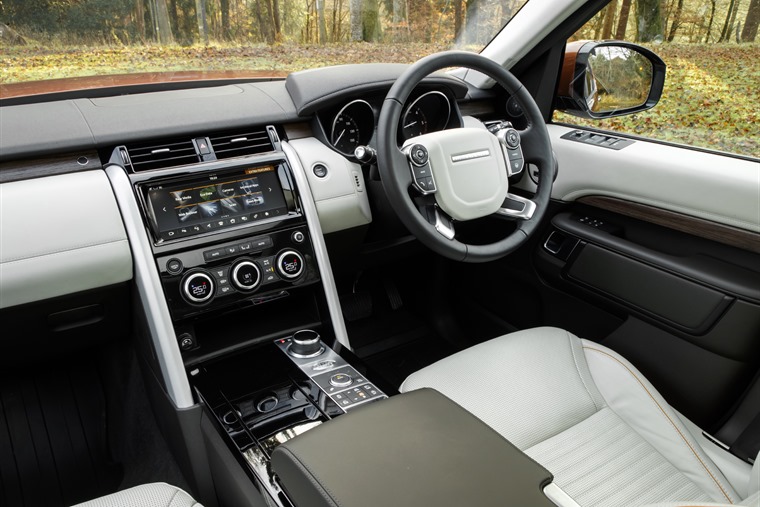
Yes, you still get jiggled around as the car works its way over rough terrain, but it’s never uncouth...
The Terrain Response allows you to tailor the car’s ability to cope with whatever conditions you find yourself in, or you can leave it in Auto for the computers to do all the hard work.
Our first experience of this in the Discovery 5 was on slippery forest tracks, where the Auto setting is ideal for making controlled, easy progress. As we headed further into the wilds, these tracks became more rutted and muddy after recent rain. Still, the Land Rover had no problem maintaining forward motion thanks to its 500mm wheel articulation.
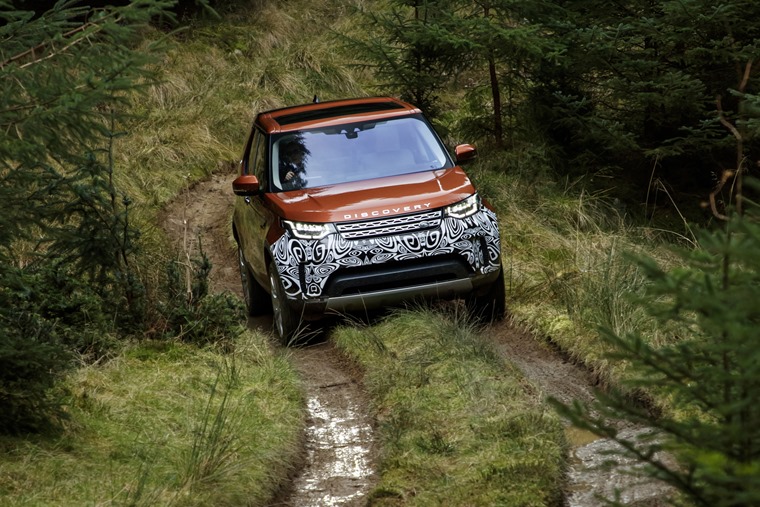
Few owners will ever come across such a hazard, but it amply demonstrates just how much the Land Rover has in reserve during daily driving duties.
As we approached more deeply scarred routes, the touch of a button has the Discovery go into its off-road mode and the air suspension lifts by 75mm – 10mm more than the previous model could manage. With greater clearance comes added ability, so on sections where the fourth generation model would be scratching its underside on some protruding rocks, the new car glides along.
Yes, you still get jiggled around as the car works its way over rough terrain, but it’s never uncouth or throwing its occupants from side to side. There’s still some suppleness left in the suspension, which is not something you can say of many of the Land Rover’s rivals.
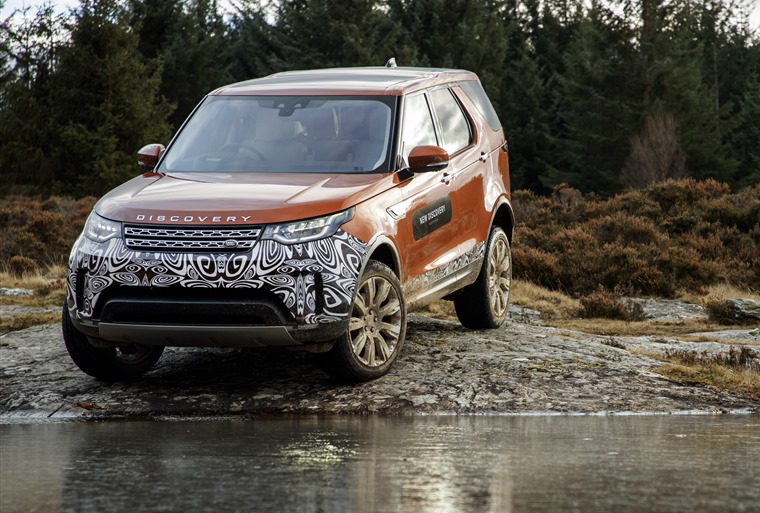
This is exactly the sort of obstruction that most so-called SUVs would find very difficult. Not so in the Land Rover...
At higher speeds between 31 and 50mph, the suspension drops down to 40mm added clearance, while above 51mph it settles back to normal ride height. Then, at 65mph, it lowers down by 13mm to improve aerodynamics and reduce fuel consumption.
But back to the off-road action. The next challenge for the Discovery was some very greasy, wet rocks. Few owners will ever come across such a hazard, but it amply demonstrates just how much the Land Rover has in reserve during daily driving duties. With the Terrain Response control turned to the appropriate Rock Crawl setting, the Disco made it look and feel amazingly simple as it picked its way across the boulders.
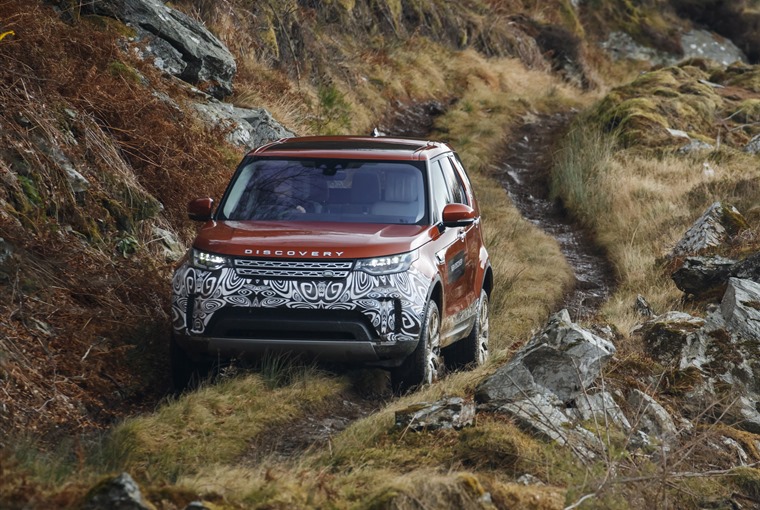
The fifth generation Discovery is some 480kg lighter than the car it replaces, so not only does it tread more lightly, there’s less of it to lug around.
After that, it was onwards into the back of beyond and down into a freezing cold and very deep pool of water. This is exactly the sort of obstruction that most so-called SUVs would find very difficult. Not so in the Land Rover thanks to its 900mm wading depth, and all without the need for a specialist snorkel to keep the engine breathing freely.
With water lapping over the bonnet as we entered the pond, the Discovery found it easy to trundle through with the low-ratio transfer box engaged. With a bow wave established, the car then hauled its way out as if emerging from nothing more arduous than a steep driveway. A 34-degree approach and 30-degree departure angle helps here, as does the 27.5-degree breakover angle.
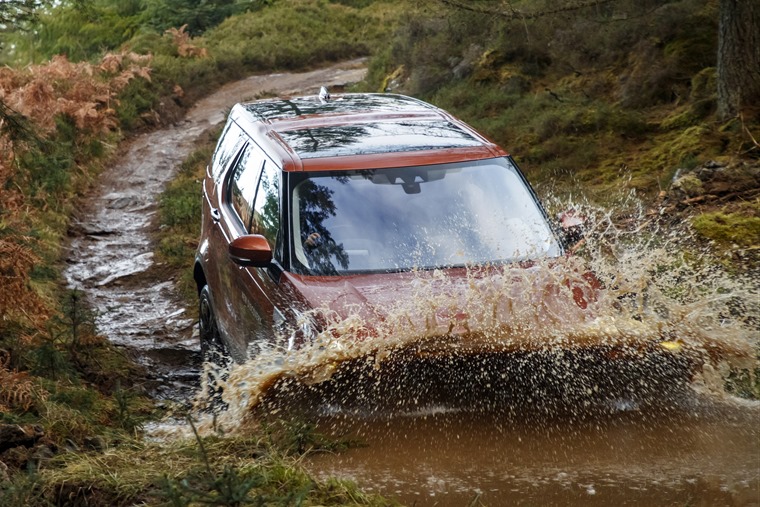
Powering all of this was Land Rover’s latest Ingenium 3.0-litre V6 turbodiesel engine with 258hp and 443lb ft of torque. This engine spec is expected to be the best seller when the Discovery 5 hits showrooms in 2017 and it’s easy to see why.
It’s better than ever when dealing with atrocious conditions, it’s quieter, more comfortable and the latest V6 turbodiesel is a mighty fine bit of engineering...
It’s considerably more refined than the Discovery 4’s V6 diesel and it provides 39.2mpg average fuel economy versus the outgoing model’s 35.3mpg. As for carbon dioxide emissions, the new car delivers 189g/km to the old one’s 213g/km, while 0-62mph in the Discovery 5 TDV6 takes 8.1 seconds versus the previous version’s 8.8 seconds.
All of this is because the fifth generation Discovery is some 480kg lighter than the car it replaces, so not only does it tread more lightly, there’s less of it to lug around. Thankfully this doesn’t affect the car’s maximum towing capacity, which remain at 3500kg and is assisted by a host of new technology to make it easier and safer when pulling a trailer.
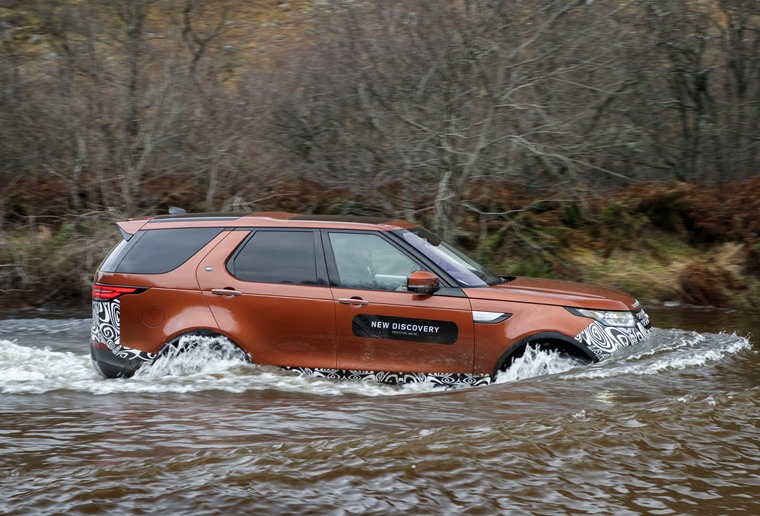
So, what has our off-road drive of the Discovery 5 told us? Well, it’s better than ever when dealing with atrocious conditions, it’s quieter, more comfortable and the latest V6 turbodiesel is a mighty fine bit of engineering.
We’ll need to wait to drive the car on-road to say what overall handling and driving manners are like, but based on this off-road excursion the new model seems a more than worthy addition to the Discovery family.
